Abstract
The quantitative determination of biomass in a suspension by means of ultrasound velocity is a simple and on-line-applicable method. Such an ultrasonic sensor offers the advantage of being long-term stable, reliable, and sterilizable. In this paper we present sound velocity measurements made with different microorganisms. The experimental results which we have obtained with an impulse-echo method will be compared with theoretical predictions and discussed with respect to previous findings (Y. Ishimori, I. Karube, and S. Suzuki, Appl. Environ. Microbiol. 42:632-637, 1981).
Full text
PDF
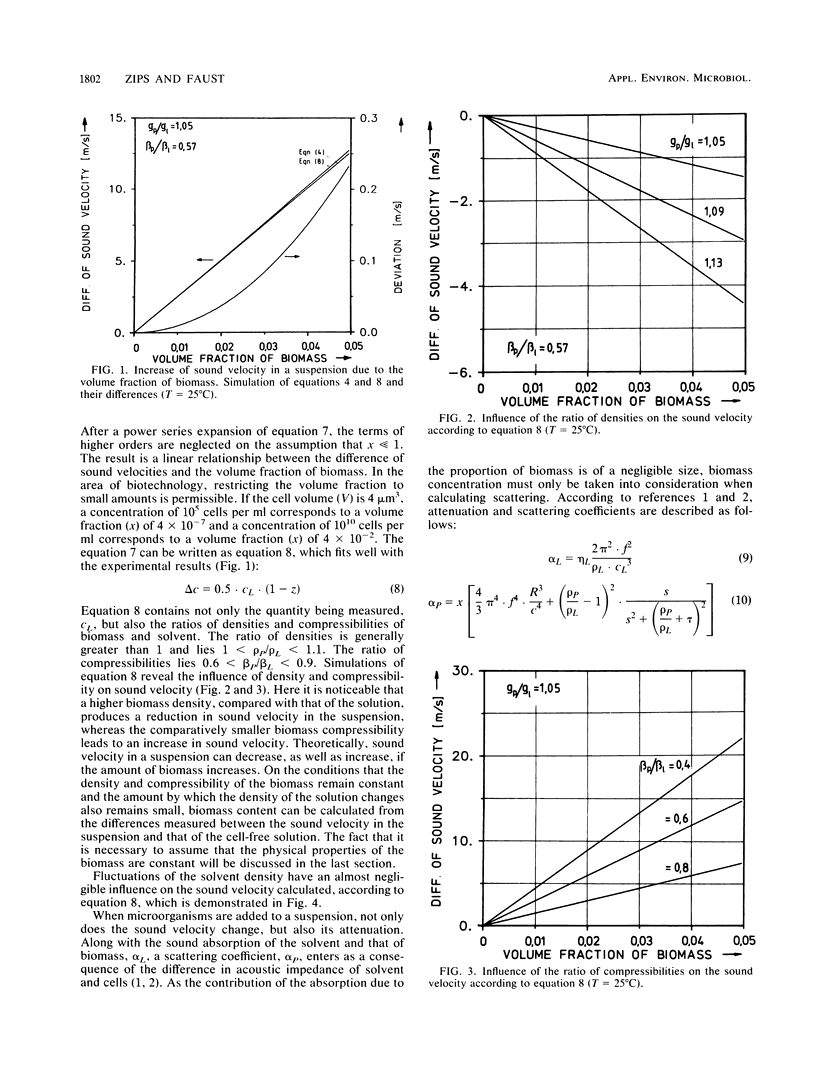
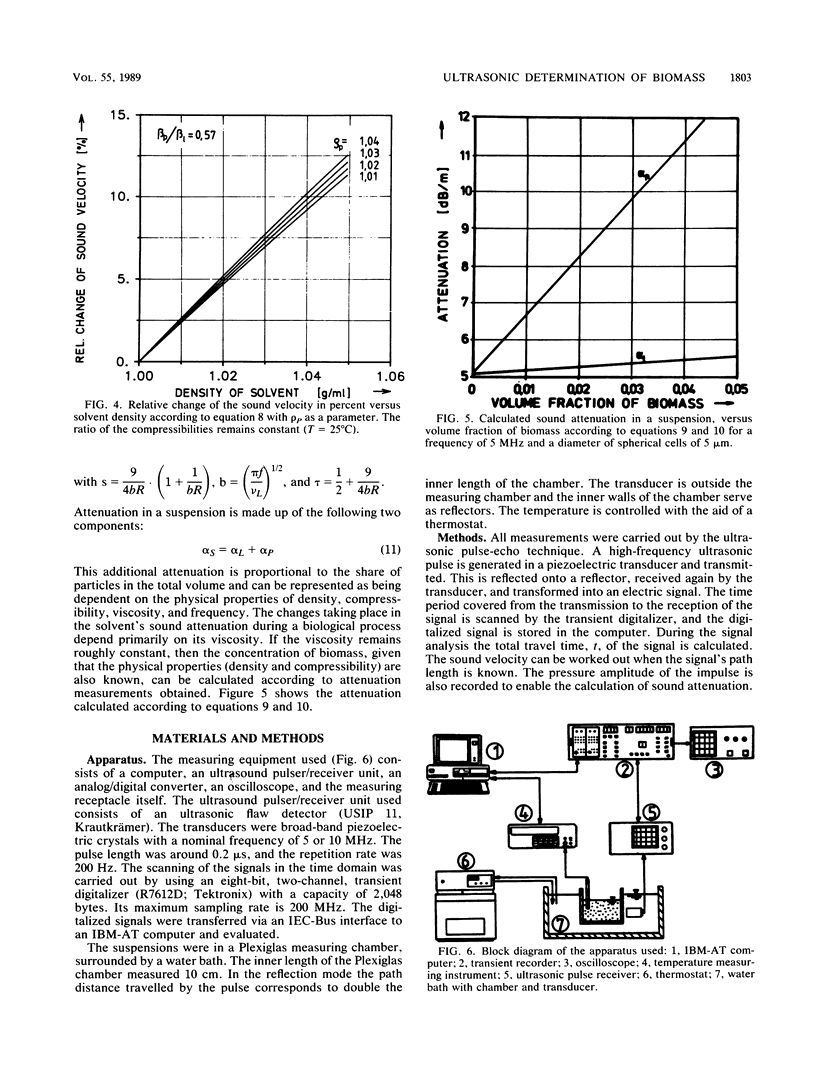
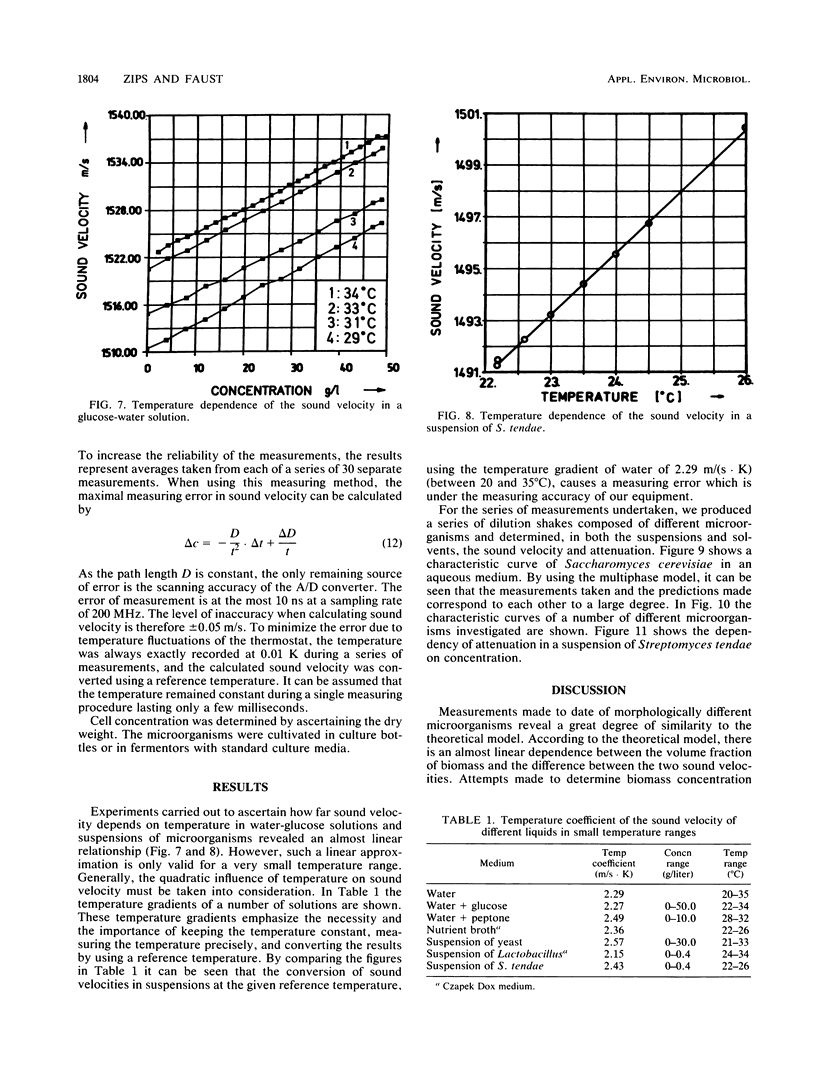
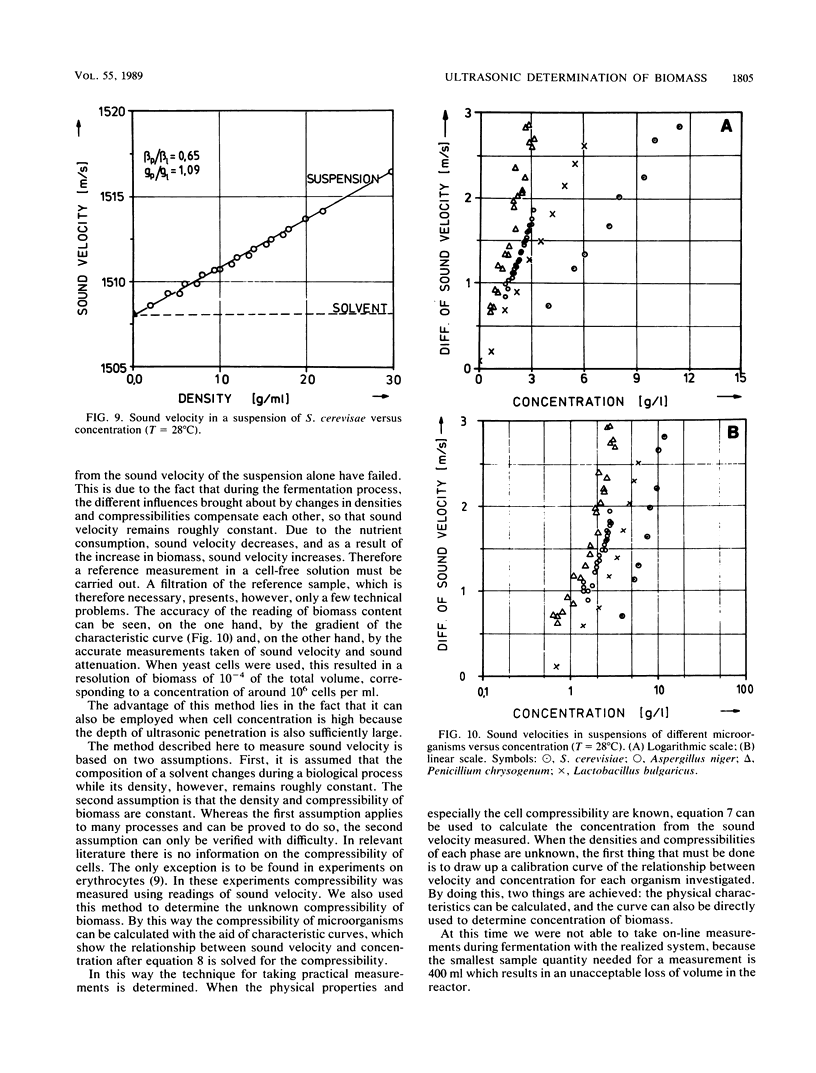
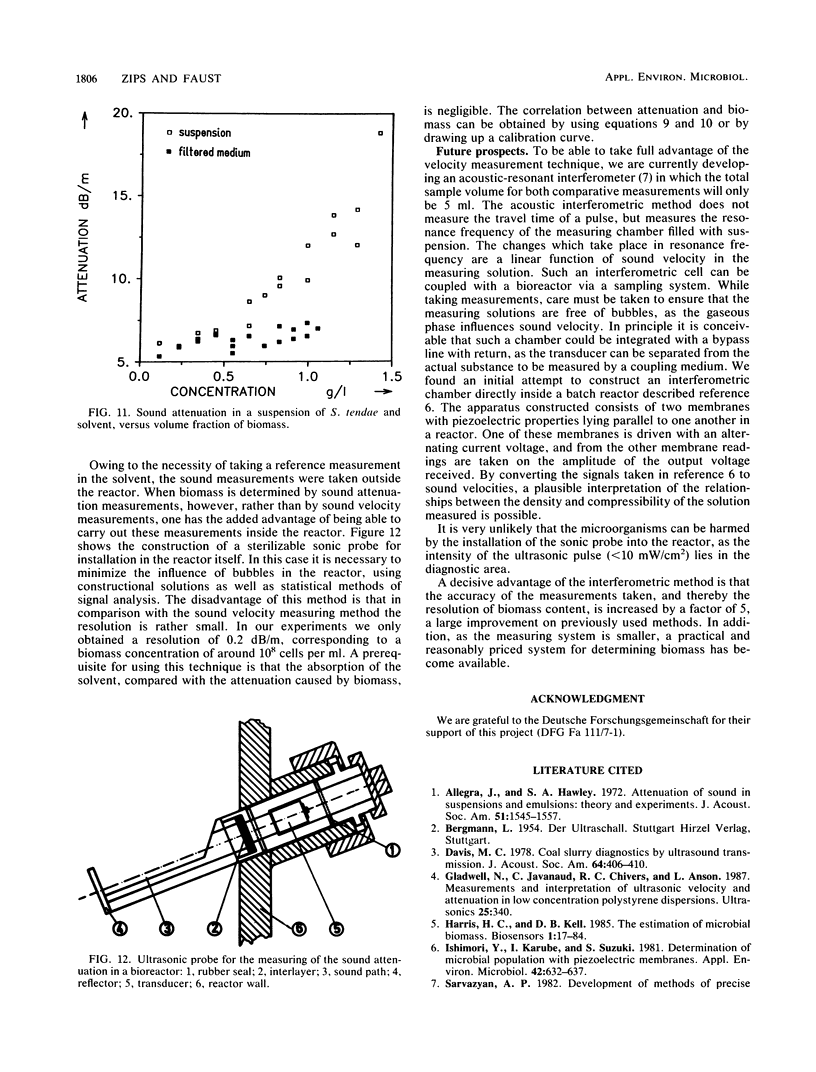
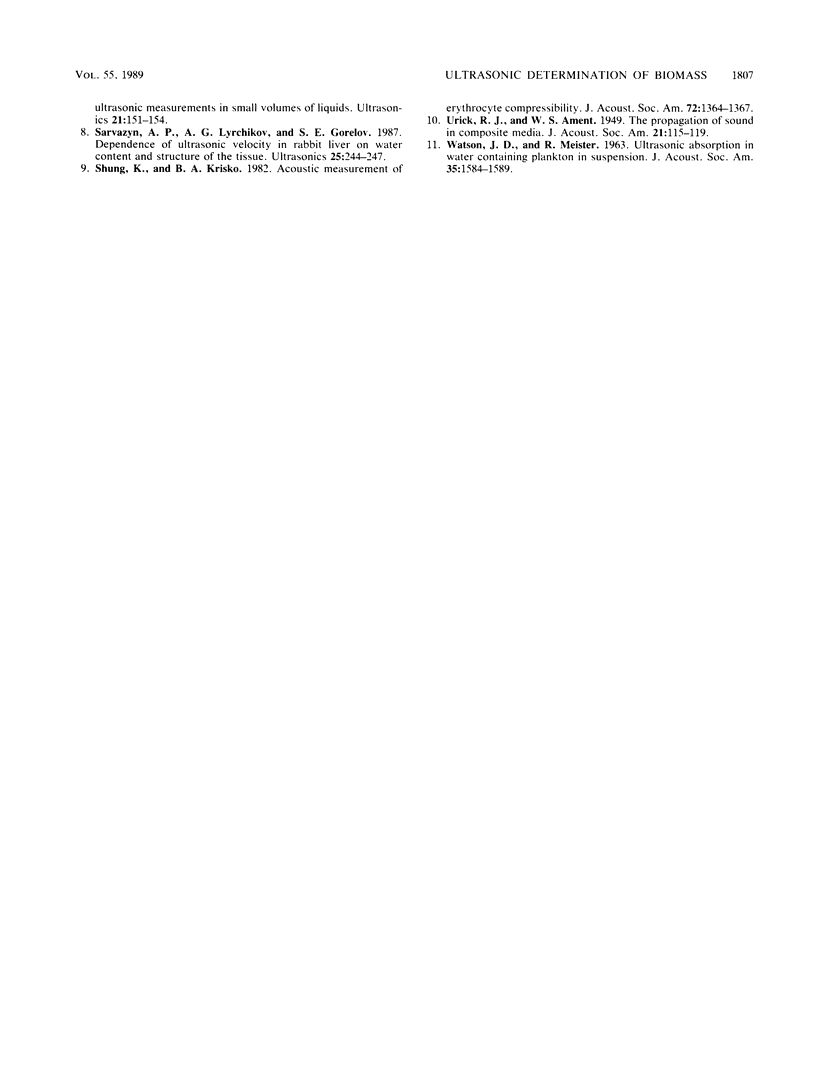
Selected References
These references are in PubMed. This may not be the complete list of references from this article.
- Harris C. M., Kell D. B. The estimation of microbial biomass. Biosensors. 1985;1(1):17–84. doi: 10.1016/0265-928x(85)85005-7. [DOI] [PubMed] [Google Scholar]
- Ishimori Y., Karube I., Suzuki S. Determination of microbial populations with piezoelectric membranes. Appl Environ Microbiol. 1981 Oct;42(4):632–637. doi: 10.1128/aem.42.4.632-637.1981. [DOI] [PMC free article] [PubMed] [Google Scholar]
- Sarvazyan A. P., Lyrchikov A. G., Gorelov S. E. Dependence of ultrasonic velocity in rabbit liver on water content and structure of the tissue. Ultrasonics. 1987 Jul;25(4):244–247. doi: 10.1016/0041-624x(87)90040-0. [DOI] [PubMed] [Google Scholar]
- Shung K. K., Krisko B. A., Ballard J. O., 3rd Acoustic measurement of erythrocyte compressibility. J Acoust Soc Am. 1982 Nov;72(5):1364–1367. doi: 10.1121/1.388439. [DOI] [PubMed] [Google Scholar]


